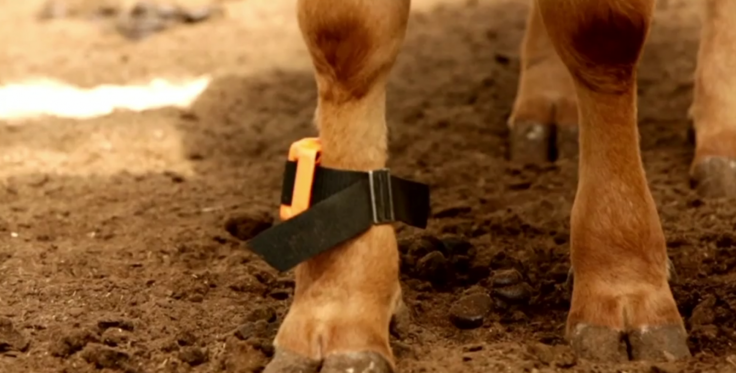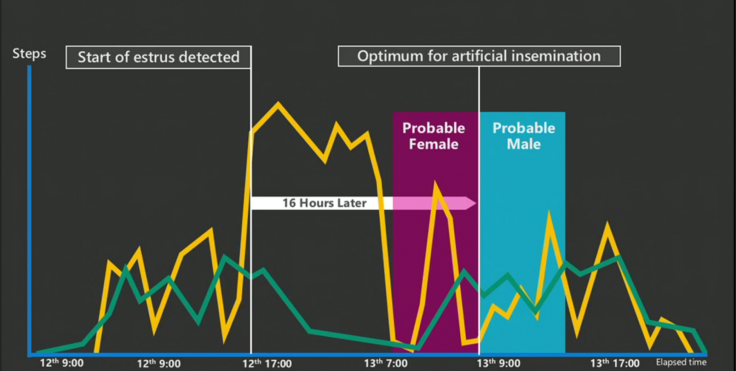Connected Cattle: How wearables and the cloud help farmers get their cows pregnant

"When AI meets AI."
This is how Microsoft's Joseph Sirosh succinctly explained a system which leverages cloud computing, wearable technology and the internet of things to help farmers accurately predict the best time to get their cows pregnant.
The two AIs are, of course, artificial intelligence and artificial insemination.
Sirosh was speaking during the second day of Microsoft's annual developer conference Build in San Francisco and was describing a system called Gyujo which was developed by Fujitsu and which uses a pedometer strapped to the leg of the cow to help figure out exactly when is the best time to inseminate a cow if you want a male or female calf.
For farmers, the importance of getting this right is huge. Artificial insemination success rates today are around 70% with a pregnancy rate of around 40% when the detection rate of when the cow is in heat is 55%.
In heat
If you can push that detection rate up to 95% (which is the level of accuracy claimed by Fujitsu's system) then the pregnancy rate shoots up to 67%.
Detecting when estrus (to give being "in heat" its technical name) begins is normally difficult. It lasts for just 12–18 hours every 21 days and typically occurs between 10pm and 8am.

In order to accurately detect when estrus begins, the engineers at Fujitsu asked researchers what happens when a cow goes into heat, and found out that they begin to "walk around furiously" and it was this key piece of information which allowed the Japanese company to develop its system.
Gyujo works by constantly monitoring the number of steps a cow is taking. When that level spikes, the system knows that it is likely estrus has begun. The system also knows that the optimum time for artificial insemination is 16 hours from the start of this period.
Fujitsu researchers also discovered that if farmers inseminate their cows in the four hours before this optimum time, it is probable they will have a female calf, while if they carry out the procedure in the four hours afterwards, it is probable they will have a male calf.
"The sexiest story in the cloud"
Once the system has detected estrus has begun, it will send an alert to a farmer's smartphone or computer, so they always know exactly what is happening with their herd.
A further unexpected benefit of monitoring the step patterns of the cows is that researchers were able to detect up to eight different diseases the animals were suffering from.

Microsoft says that smart connected systems like this are only possible thanks to it Azure cloud computing infrastructure which Fujitsu plugs into in order to carry out the heavy lifting of analysing all the data which is produced in real time, to provide accurate and timely alerts to farmers.
Sirosh dryly called the story of the connected cow "the sexiest story in the cloud" but added that it is about "human ingenuity" revolutionising some of the world's oldest industries such as dairy farming.
Sirosh added that with the services available on Microsoft's Azure cloud platform developers could build similar systems and roll them out globally in just a few days.
"Today, every company is a data company, even the ones you don't expect like a dairy farm."
© Copyright IBTimes 2025. All rights reserved.






















